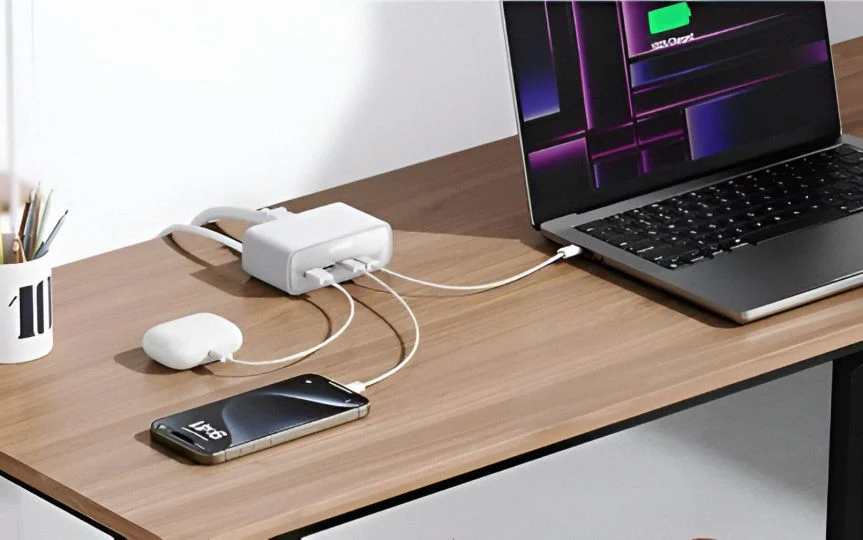
A complete guide to choosing a charger: From fast charging to wireless charging, the latest guide for 2025
Updated on September 6, 2025
In daily life, chargers have become indispensable electronic accessories. From mobile phones and laptops to electric vehicles, advancements in charging technology are transforming our way of life. This article provides a comprehensive analysis of charger types, technical features, and selection tips to help you find the most suitable charging solution among numerous products.
Table of contents

Current Market Status and Development Trends of Chargers
In 2025, the global charger market continues to expand, with the Gallium Nitride (GaN) fast charging market experiencing explosive growth.According to market research reports, the global demand for electric vehicle charging equipment is expected to see significant growth by 2030, which also drives innovation and development in household and commercial charging devices.
In the consumer electronics sector, Gallium Nitride (GaN) chargers are gradually replacing traditional silicon-based chargers due to their high efficiency and compact size. GaN technology enables high-power fast charging devices to become more lightweight and portable, meeting modern consumers' dual demands for portability and efficient charging.
Comprehensive Analysis of Common Charger Types
1. Wired Fast Chargers
Wired fast charging is currently the most mainstream charging solution, primarily divided into:Standard Chargers: Typically with an output power of 5-10W, suitable for daily slow charging needs.
Fast Chargers: Output power ranges from 18W to over 100W, supporting various fast charging protocols (such as PD, QC, etc.), and capable of quickly charging devices like phones and laptops.
Gallium Nitride (GaN) Chargers: Utilize Gallium Nitride semiconductor material, offering higher efficiency, smaller size, and better heat dissipation. Currently the preferred technology for high-power chargers.
2. Wireless Chargers
Wireless chargers charge devices through electromagnetic induction, eliminating the need for cables:
Qi Standard Wireless Charging: The most common wireless charging standard, compatible with various brand phones and wearable devices.
Magnetic Wireless Charging: Apple MagSafe and its compatible products provide more precise alignment and higher power.
Multi-Device Wireless Charging Pads: Can simultaneously charge phones, earphones, and watches, reducing cable clutter.
3. Car Chargers
Car chargers allow users to recharge devices while on the move:
Cigarette Lighter Socket Chargers: Traditional 12V car charging solution.
Built-in Car Chargers: Increasingly, electric vehicles integrate charging ports directly into the vehicle system.
GaN Car Chargers: Emerging technology offering higher efficiency and smaller size.
4. Specialized Chargers
Electric Vehicle Chargers: Including household wall-mounted charging stations and public fast charging stations.
IoT Device Chargers: Low-power charging solutions designed for low-power IoT devices.
How to Choose the Right Charger for You
1. Identify Your Usage NeedsConsider what devices you need to charge, daily charging frequency, and how much time you typically have for charging. Different devices and usage habits require different types of chargers.
2. Pay Attention to Key Parameters
Output Power: Higher power means faster charging, but ensure your device supports the corresponding power level.
Interface Type: USB-A, USB-C, or Lightning, etc.; the number of ports should also be considered.
Fast Charging Protocols: Such as PD, QC, VOOC, etc., ensure compatibility with your device.
Safety Certifications: Check for CE, FCC, RoHS, and other safety certifications to ensure safe use.
3. Brand and Quality
Choose well-known brands and products with guaranteed quality. Although prices may be slightly higher, safety and durability are better assured. Platforms like Taobao feature numerous charger brands, including Apple, Huawei, Xiaomi, OPPO, and other well-known brands, as well as many small and medium-sized brands.
4. Consider Cost-Effectiveness
Find the most suitable product within your budget. Chargers on platforms like Taobao are affordable and offer high cost-effectiveness, allowing consumers to select desired products across different price ranges.
Charger Safety Guide
Avoid Prolonged Overcharging: Although modern devices have protection circuits, prolonged overcharging is still not recommended.Use Original or Certified Data Cables: Poor-quality data cables may affect charging efficiency and even pose safety risks.
Pay Attention to Heat Dissipation: Ensure good ventilation during charging and avoid covering the charger.
Regular Inspection: Check the charger and cables for wear, overheating, or other signs of damage.
Avoid Humid Environments: Do not use chargers in humid environments such as bathrooms.
Future Outlook on Charging Technology
Charging technology continues to innovate and develop:Higher Power Fast Charging: Charging technologies with 200W or even higher power are expected to emerge in the coming years.
Long-Distance Wireless Charging: Technology is under development, potentially enabling charging from anywhere in a room in the future.
Increased Intelligence: Chargers will be able to automatically identify device types and optimize charging parameters.
Green and Eco-Friendly: Greater emphasis on energy efficiency and the use of eco-friendly materials.
Conclusion
Choosing the right charger requires comprehensive consideration of device needs, usage scenarios, and personal budget. Gallium Nitride fast charging technology is the current trend, balancing power, size, and price; wireless charging offers unparalleled convenience; while traditional wired chargers continue to meet basic needs with their stability and reliability.Regardless of the charger chosen, safety and device compatibility should be the primary considerations. We hope this article helps you find the most suitable charger among the many products available, keeping your devices fully powered and ready to tackle various challenges in daily life.

